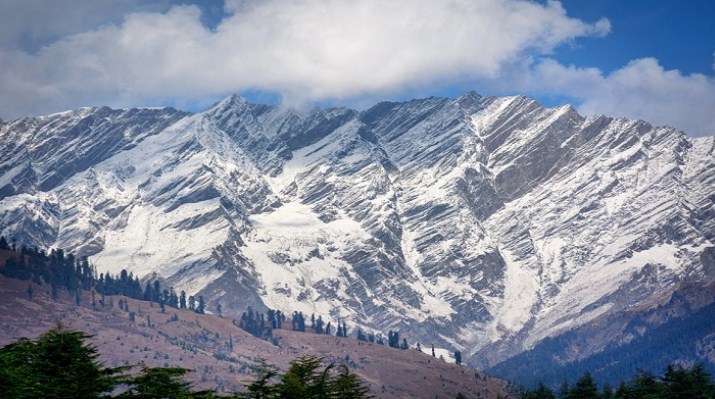Jammu,Kashmir and Ladakh may witness a temperature increase of up to 6.9 degreesCelsius by the end of the century due to climate change, according to a studywhich warns that the glaciers in this Himalayan region could shrink by 85 percent if the projections come true. The study, published in the journal ClimaticChange on July 29, predicted the impact of future climate change in the Jammu,Kashmir and Ladakh Himalaya, by the end of the twenty-first century using anensemble of 11 models under three greenhouse gas emission scenarios.It alsohighlights the changes in the distribution of the prevalent climate zones inthe region.
"Thestudy has been carried over the entire region of Jammu and Kashmir, includingJammu, Kashmir, Ladakh, Gilgit-Baltistan, Aksai Chin and other regions acrossthe Line of Control (LoC)," noted Professor Shakil Ahmad Romshoo, Dean ofResearch at the University of Kashmir.
"Theaverage annual temperature is projected to increase by 4.5 degrees Celsius,3.98 degrees Celsius, and 6.93 degrees Celsius by the end of the twenty firstcentury under three different scenarios, respectively," Romshoo, lead authorof the research, told PTI.
Thetemperature increase of 6.9 degrees Celsius for the Jammu and Kashmir Himalayasis way more than the projected average rise in the global and nationaltemperatures by the end of the century.Romshoo added that if the currentemission rates of greenhouse gases are sustained, the global averagetemperature is likely to rise by nearly 5 degrees Celsius by the end of thetwenty-first century under the worst case scenario.
Similarly,the average temperature over India is projected to rise by approximately 4.4degrees Celsius under such a scenario, he said.Romshoo noted that there will besignificant impacts on almost every sector of the economy in Jammu, Kashmir andLadakh due to this climate change driven temperature increase.
"Theglaciers, the most important resource of the region, are going to shrink byaround 85 per cent by the end of the century if the projections cometrue," the professor at the Department of Earth Sciences, University ofKashmir, noted.
Heexplained that this would lead to significant depletion of the streamflows inthe Indus basin, the waters of which are shared between several countries inSouth Asia.Similarly, the impacts on agriculture, horticulture and even tourismshall significantly threaten the livelihood of the dependent population in theregion, the environmentalist warned.
Theresearchers, including Jasia Bashir and Irfan Rashid from the Department ofEarth Sciences, University of Kashmir, noted that the drivers of climate changeare primarily the increasing emission rates of greenhouse gases in theatmosphere.Greenhouse gas emission is directly related to fossil fuel use,industrialisation, deforestation, air pollution, and other environmentalunfriendly activities across the globe, they explained.
"Though,the mountainous regions like Jammu, Kashmir and Ladakh are the leastindustrialised, unfortunately, they are bearing the brunt of the climate changeas the phenomena has global dimensions and footprint," Romshoo noted.
Theprojected climate change under the three emission scenarios also indicatessignificant changes in the distribution of prevalent climate zones.Theprojected climate change under different scenarios revealed that thesubtropical and temperate climatic zones would expand while the cold desertclimate zone is projected to shrink significantly under all the threescenarios, the researchers noted.
"Thecold desert climate zone in the Ladakh region would shrink by 22 per cent andcorrespondingly the subtropical and temperate zones would expand due to theprojected climate change," the researchers noted in their study.
"Theprojected changes in the climate and climate zones by the end of thetwenty-first century would have significant impacts on various sectors in theregion which might lead to the redistribution and changes in the composition ofvegetation, enhancement of snow depletion and glacier recession," saidRomshoo.
He notedthat the situation would also lead to an increase in the frequency of climateextremes, changes in streamflows, in the faunal and floral biodiversity, plantinvasions, changes in agriculture and horticulture productivity.
This isin addition to the loss of hydropower generation, ecosystem services, andimpacts on other key economic sectors in the region, according to theresearchers.
"Thevital information generated in this research would inform policymaking forframing robust strategies for adaptation and mitigation of the impacts ofclimate change on various socioeconomic and ecological sectors in theregion," Romshoo added.
Leave a comment
Your email address will not be published. Required fields are marked *


